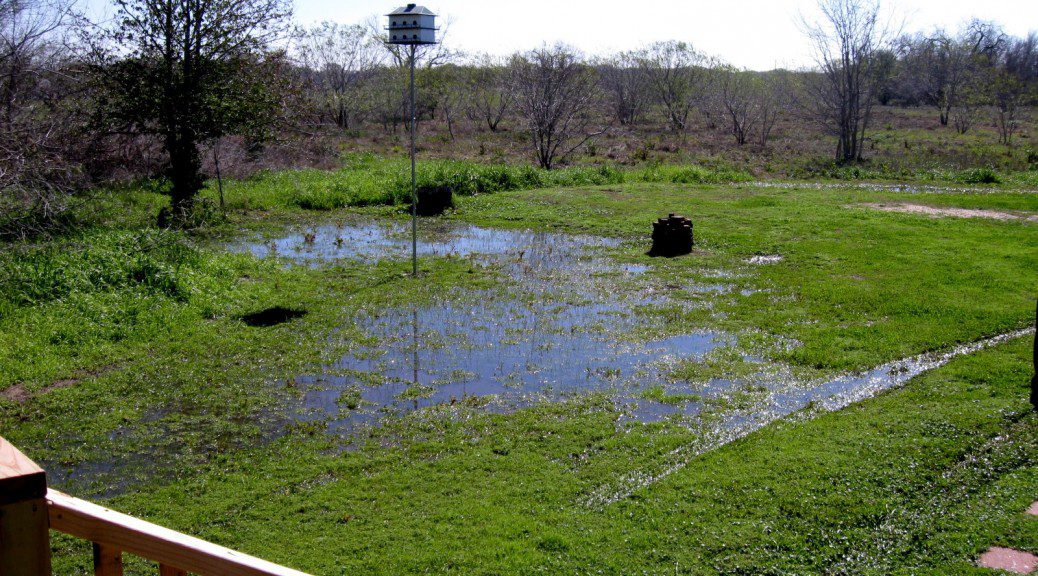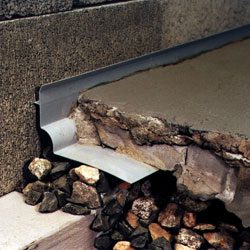 Frequent rain is common in Toronto during the rainy months of the year which can saturate the soil surrounding your house. If you keep a lush front yard or backyard requiring regular irrigation, this will also contribute to another source of water that the soil surrounding your house will be taking in. When this soil becomes saturated it can lead to erosion and cause shifting of your home’s foundation, leading to structural instability, foundation cracks, and potential basement leaks. A weeping tile system is a great way to counteract this damage. As an intricate water drainage system, a weeping tile system can successfully protect your house foundation from water damage.
Frequent rain is common in Toronto during the rainy months of the year which can saturate the soil surrounding your house. If you keep a lush front yard or backyard requiring regular irrigation, this will also contribute to another source of water that the soil surrounding your house will be taking in. When this soil becomes saturated it can lead to erosion and cause shifting of your home’s foundation, leading to structural instability, foundation cracks, and potential basement leaks. A weeping tile system is a great way to counteract this damage. As an intricate water drainage system, a weeping tile system can successfully protect your house foundation from water damage.
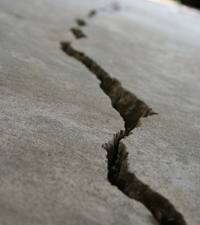
Photo courtesy of Tristatefw.com
In houses where there might be congested or blocked weeping tiles, or no weeping tile system at all installed around the perimeter of your home’s footing, water will be able to seep into your basement through any weak spot like cracks in the foundation, mortar joints, tie rods or window wells. Having a weeping tile system collects the underground water and discharges it either into the city’s storm drains or your home’s sump pit in which case the groundwater collected in the sump pit can be removed by a sump pump.
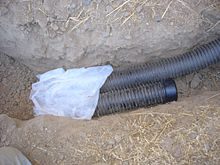
Photo courtesy of En.Wikipedia.org
There exist two types of weeping tile systems; exterior and interior. An exterior weeping tile system is buried underneath the soil close to the foundation wall helping to prevent moisture before it has a chance to penetrate the house. On the other hand, an interior weeping tile system is installed inside the basement running along the floor at the lowest points of the basement, and helps manage the water that has already passed through. Weeping tile systems help relieve hydrostatic pressure; this is the pressure that builds up against your walls due to groundwater and insufficient drainage.
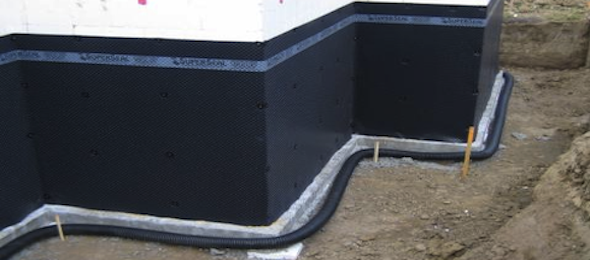
Installing an exterior weeping tile system involves digging up a trench outside of your house around the perimeter of your home’s foundation and fitting an elaborate configuration of pipes within the soil. The plastic pipes are designed with perforations or slits which collect water from the soil and relate it away from the foundation of your house. To prevent soil from entering the perforations and slits, most of these pipes are covered with rot-proof filter cloth material which helps prevent the holes from getting clogged, helping to extend the life of your weeping tile system.
Installing an interior weeping tile system involves digging up a trench along the perimeter of the basement floor and installing a drainage membrane, such as Delta MS to the bare foundation wall, to channel water underneath the basement slab, into the weeping tile. Water that enters the weeping tile carries the water to a sump pump by way of gravity. Interior weeping tile system installations can be favorable because the work can be performed year-round and it will not affect any outdoor landscaping and stone work you may have.
For more great tips and information on other topics related to waterproofing your basement, be sure to visit the City Wide Group Facebook Page!




